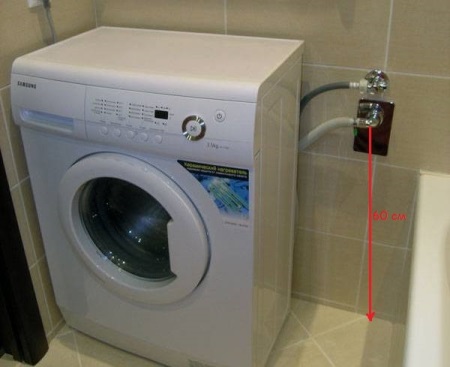Check valve for washing machines on the drain

When connecting the washing machine to the drain, you need to consider many important nuances, on which will depend not only the efficiency of the drain system, but also the quality of washing. The simplest and most convenient connection is to connect the drain hose directly to the drain outlet. But for the proper functioning of the drain, several conditions must be met (for example, the drain hose must be at a height of at least 50 cm from the floor). However, these requirements are not always met, so craftsmen have to look for other connection options.

Connecting the drain through a check valve is a great solution to the problem. About what is this device, what it is needed for and how to install it correctly, read below.
Need for use
If the drain hose is connected to the sewer outlet with a violation of plumbing standards, it is very likely that there will be a return of dirty water from the sewer pipe back into the drum of the washing machine. As a result, at the end of washing you will get stale, bad smelling laundry. The check valve is designed to prevent this development (which, by the way, is called the "siphon effect").
A non-return valve or anti-siphon should be installed when it is not possible to mount the drain hose at the correct height. Another case in which you can't do without this device is when the connection of the washing machine drain is made through a sink siphon.

About the installation of anti-siphon should be thought about in the case, if during the washing you notice signs of siphon effect. These include: increased washing time, poorly washed items, increased consumption of water and electricity by the washing machine.
How does it work?
A check valve is a fairly simple device made of stainless steel metal or plastic. In appearance, it slightly resembles a stop valve, and its principle of operation is similar. The anti-siphon is needed to regulate the water flow in the pipe, allowing it to move only in one direction.
Initially the check valve is in a locked state, but when the drain program is activated, it opens under the pressure of the water. When the drain program is turned off, the valve is automatically locked, preventing the water from returning.
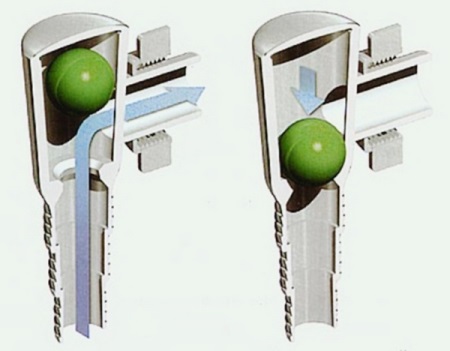
Types
There are several varieties of check valves on today's plumbing equipment market. They differ in terms of design features, type of installation and area of application.
The main types of anti-siphons:
- collapsible - a metal device consisting of several parts; this type is convenient in that, if necessary, it can be disassembled and cleaned;
- Non-dismountable - monolithic construction made of plastic; this type is considered the most budget variant;
- mortise valve - a valve that is installed directly in the pipe, in the place of the cut out of it piece;
- sink check valve - a check valve designed for use in sink and washbasin drain traps;
- wall-mounted - a beautiful design of chrome-plated metal, which is mounted on the wall; the most expensive option of all the above.
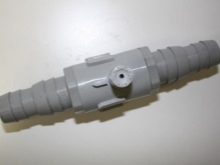
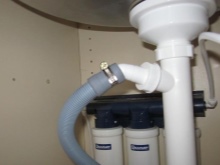
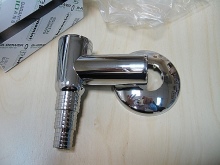
Features of usage
- Some manufacturers of household appliances add a check valve to the basic equipment of washing machines, but not all do so. Therefore, most likely, you will have to buy this device on your own in a specialized store.
- If you connect the drain by means of a check valve, then you can not worry about compliance with the recommendations regarding the height of the location of the drain hose. The main thing is to install all elements of the system in such a way that they have free access in case you need to clean or repair.
- When buying a check valve, be prepared for the fact that every few years this device will have to be replaced, as it will be exposed to hard tap water. The higher quality the product, the longer it will last, but still do not overpay much - no matter how expensive the device is, sooner or later it will need to be replaced.
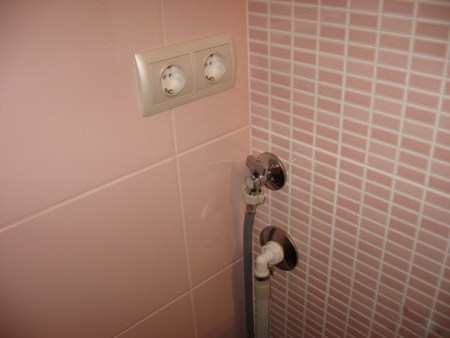
Installation
Installation of the check valve - the task is not difficult at all, it is quite possible to cope with it yourself, without resorting to the help of a master plumber. Full information on the installation you can get from the instructions to the device, which must be read, but we will give only brief recommendations.
Anti-siphons come in different forms, but most of them are shaped like a tube with two holes. One end of the device must be connected to the sewer (screwing it into the outlet or cutting into the pipe), and the other end must be connected to the drain hose of the washing machine. In order to prevent leaks, treat all connections with silicone sealant for plumbing.
You can see how to install the valve in the following video.
Tips for choosing
- Experts say that not all models of drain valves are suitable for your washing machine. Choose the right anti-siphon will help you in the service center. You can also seek advice from an experienced technician who specializes in the repair of washing machines.
- The best recommendations have check valves from European manufacturers. A large number of positive reviews collects equipment from Italian firms Siroflex and Merloni, as well as from the Czech company Alcaplast.
Is it worth replacing with something else?
Check valve for the washing machine is not such a rare product, but it is not always possible to find it in stores, especially if you live in a small town. So many people are wondering: can something else be used to prevent the siphon effect?
Unfortunately, the answer to this question will be negative. There are no analogues to the anti-siphon yet. To do without it, you will have to organize the drain in such a way that all elements of the system are positioned as they should be, and then there will be no siphoning effect.
